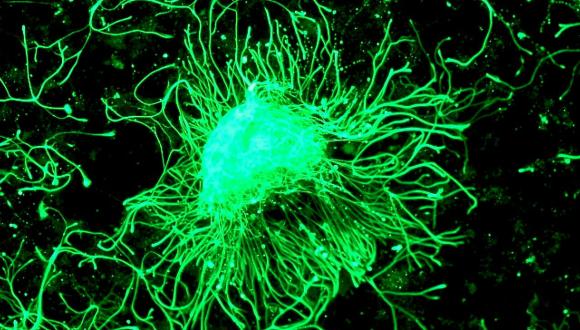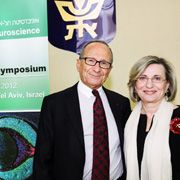Bursts of Brain Activity May Protect Against Alzheimer's Disease
Evidence indicates that the accumulation of amyloid-beta proteins, which form the plaques found in the brains of Alzheimer's patients, is critical for the development of Alzheimer’s disease, which impacts 5.4 million Americans. And not just the quantity, but also the quality of amyloid-beta peptides is crucial for Alzheimer's initiation. The disease is triggered by an imbalance in two different amyloid species — in Alzheimer's patients, there is a reduction in a relative level of healthy amyloid-beta 40 compared to 42.
Now Dr. Inna Slutsky of Tel Aviv University’s Sackler Faculty of Medicine and the Sagol School of Neuroscience, with postdoctoral fellow Dr. Iftach Dolev and PhD student Hilla Fogel, have uncovered two main features of the brain circuits that impact this crucial balance. The researchers have found that patterns of electrical pulses (called “spikes”) in the form of high-frequency bursts and the filtering properties of synapses are crucial to the regulation of the amyloid-beta 40/42 ratio. Synapses that transfer information in spike bursts improve the amyloid-beta 40/42 ratio.
This represents a major advance in understanding that brain circuits regulate composition of amyloid-beta proteins, showing that the disease is not just driven by genetic mutations, but by physiological mechanisms as well. Their findings were recently reported in the journal Nature Neuroscience.
Tipping the balance
High-frequency bursts in the brain are critical for brain plasticity, information processing and memory encoding. To check the connection between spike patterns and the regulation of amyloid-beta 40/42 ratio, Dr. Dolev applied electrical pulses to the hippocampus, a brain region involved in learning and memory.
When increasing the rate of single pulses at low frequencies in rat hippocampal slices, levels of both amyloid-beta 42 and 40 grew, but the 40/42 ratio remained the same. However, when the same number of pulses was distributed in high-frequency bursts, researchers discovered an increased amyloid-beta 40 production. In addition, the researchers found that only synapses optimized to transfer encoded by bursts contributed towards tipping the balance in favour of amyloid-beta 40. Further investigations conducted by Fogel revealed that the connection between spiking patterns and the type of amyloid-beta produced could revolve around a protein called presenilin. "We hypothesize that changes in the temporal patterns of spikes in the hippocampus may trigger structural changes in the presenilin, leading to early memory impairments in people with sporadic Alzheimer's," explains Dr. Slutsky.
Behind the bursts
According to Dr. Slutsky, different kinds of environmental changes and experiences – including sensory and emotional experience – can modify the properties of synapses and change the spiking patterns in the brain. Previous research has suggested that a stimulant-rich environment could be a contributing factor in preventing the development of Alzheimer's disease, much as crossword and similar puzzles appear to stimulate the brain and delay the onset of Alzheimer’s. In the recent study, the researchers discovered that changes in sensory experiences also regulate synaptic properties – leading to an increase in amyloid-beta 40.
In the next stage, Dr. Slutsky and her team are aiming to manipulate activity patterns in the specific hippocampal pathways of Alzheimer's models to test if it can prevent the initiation of cognitive impairment. The ability to monitor dynamics of synaptic activity in humans would be a step forward early diagnosis of sporadic Alzheimer's.
Hila Milshtein, Yevgeny Berdichevsky, and Neta Gazit of Dr. Slutsky's lab at TAU, and Noa Lipstein and Nils Brose of the Max-Planck-Institute for Experimental Medicine in Germany, also contributed to this work.
Dr. Slutsky's research is partially supported by Rosetrees Trust, a UK foundation dedicated to supporting the best in medical research.
This story was originally reported by AFTAU






